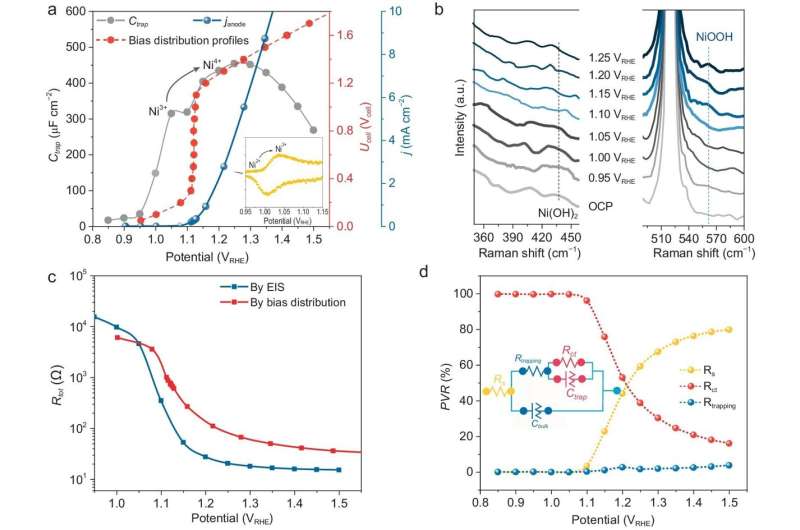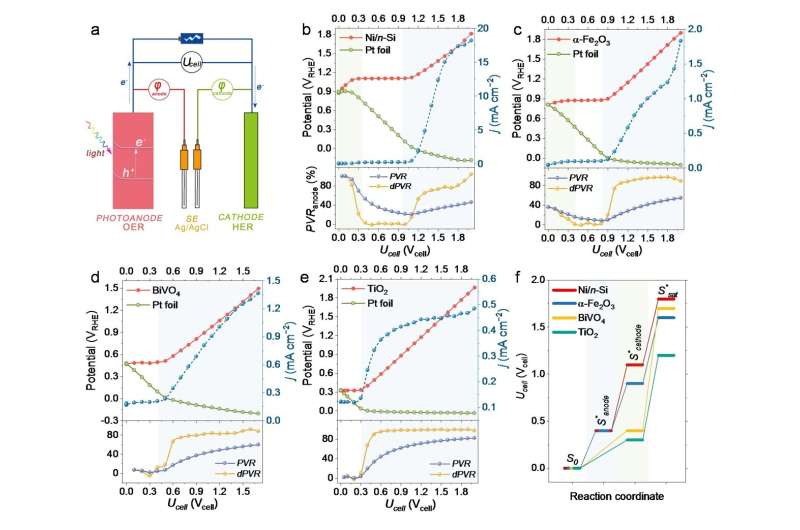This article has been reviewed according to Science X's editorial process and policies. Editors have highlighted the following attributes while ensuring the content's credibility:
fact-checked
trusted source
proofread
Bias distribution and regulation in photoelectrochemical overall water-splitting cells

The photoelectrochemical (PEC) overall water-splitting reaction (OWS) has been fully developed in the past decade, especially in new catalysts, characterization methods and reaction mechanisms. Compared with the hydrogen evolution reaction (HER), the oxygen evolution reaction (OER) is deemed the bottleneck of OWS due to its sluggish kinetics.
To reduce the bias consumption of photoanodes, a series of OER alternative half-reactions have been developed, such as alcohols, urea and ammonia oxidation reactions. The ultimate goal of photochemistry is to fabricate an efficient two-electrode unbiased PEC cell.
However, most previous studies have only focused on the properties of the working electrode in the three-electrode cell, while the polarization on the counter electrode was largely ignored. The synergistic mechanism between anodic oxidation and cathodic reduction half-reactions is still unclear.
Recently, Professor Yuchao Zhang's group proposed an experimental method to measure the bias distribution in a two-electrode PEC cell, systematically studying the bias distribution between representative photoanodes and Pt cathodes in PEC OWS cells. For the first time, they showed that the OER half-reaction is not always the rate-limiting factor of the OWS, and the bias consumption of electrodes depends on the photovoltage of the photoanode and the Fermi level of the cathode.

The study is published in the journal National Science Review.
Further studies by using Ni/n-Si as the model photoanode showed that the bias distribution in the overall reaction can be effectively adjusted by tuning the electrolyte pH and coupled half-reactions. Accordingly, they proposed a descriptor to evaluate the compatibility between various half-reactions, which pointed out a general method for designing an efficient PEC overall reaction cell.
Inspired by this, they fabricated an unbiased PEC cell consisting only of a Ni/n-Si photoanode and a Pt cathode with a photocurrent of 5.3 ± 0.2 mA cm−2.
More information: Kun Dang et al, Bias distribution and regulation in photoelectrochemical overall water-splitting cells, National Science Review (2024). DOI: 10.1093/nsr/nwae053
Provided by Science China Press




















